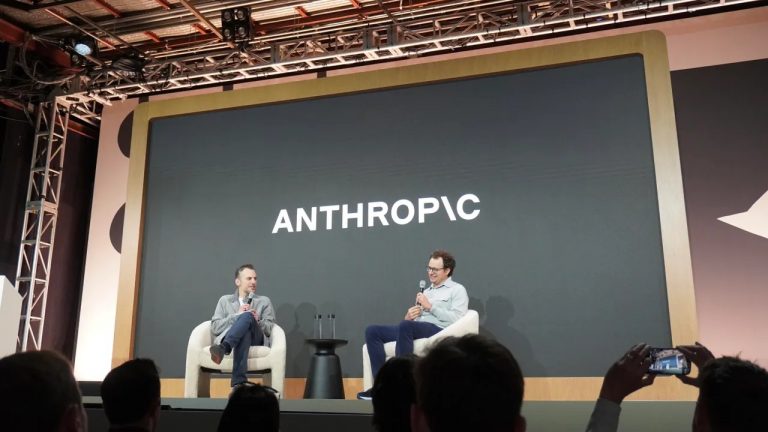
Anthropic CEO Dario Amodei has warned that artificial intelligence could wipe out as much as half of all entry-level white-collar jobs within five years — a dire projection delivered as companies across industries accelerate job cuts amid deepening structural shifts and economic pressure.
The prediction, shared during an interview with Axios at Anthropic’s inaugural developer conference Code with Claude, comes amid a surge in job cuts at major tech firms — including IBM, Business Insider, and LinkedIn — which have collectively laid off more than 8,500 employees in recent weeks.
“We, as the producers of this technology, have a duty and an obligation to be honest about what is coming,” he said. “I don’t think this is on people’s radar.”
Register for Tekedia Mini-MBA edition 19 (Feb 9 – May 2, 2026): big discounts for early bird.
Tekedia AI in Business Masterclass opens registrations.
Join Tekedia Capital Syndicate and co-invest in great global startups.
Register for Tekedia AI Lab: From Technical Design to Deployment (next edition begins Jan 24 2026).
He warned that unemployment in the United States could reach between 10 and 20 percent within one to five years, driven in large part by AI’s rapid encroachment on white-collar roles.
He criticized the current U.S. policy direction under the Trump administration for aggressively accelerating AI adoption while dismantling prior safety measures.
“That’s a polite interpretation of the Trump administration’s no-questions-asked AI policy,” Amodei told Axios, referring to the executive order that rescinded Biden-era AI safety rules.
The layoff numbers back up the urgency of Amodei’s concern. IBM recently laid off more than 3,500 workers, even as it expands AI-driven enterprise tools. Business Insider has cut over 500 positions as part of a newsroom restructuring, and LinkedIn has eliminated more than 2,000 roles in the last year across engineering, recruiting, and marketing teams. All three companies have publicly embraced AI as part of their long-term strategy.
The World Economic Forum’s Future of Jobs Report 2025 echoes Amodei’s fears. The report, based on a survey of over 11,000 executives, found that “almost half of organizations are expecting to reorient their business models toward new AI-driven opportunities (49 percent), while 47 percent plan to transition employees from AI-disrupted roles to other positions.” Alarmingly, “a significant share (41 percent) also expect to downsize their workforce as AI capabilities to replicate roles expand.”
The report further predicts that “on average, workers can expect that two-fifths (39 percent) of their existing skill sets will be transformed or become outdated over the 2025–2030 period.”
However, Amodei’s warnings are not universally accepted. A recent paper titled Artificial Intelligence and the Labor Market, authored by Menaka Hampole (Yale), Dimitris Papanikolaou and Bryan Seegmiller (Northwestern), and Lawrence D.W. Schmidt (MIT), found that the impact of AI on labor has so far been muted due to offsetting effects — namely, productivity gains that result in overall job creation despite losses in certain sectors.
Papanikolaou, a finance professor at Northwestern, clarified the distinction between job exposure and actual displacement.
“People tend to think that, okay, if a job is exposed to AI, that means the AI is going to do my job and then I’m going to be out of work. So the point we’re trying to make is that, well, not necessarily. There are some potentially offsetting factors,” he said.
He added, “What matters is not just the average exposure of your job, but also how that’s distributed across the different tasks that you’re doing. If AI is good at only some of those tasks, workers may be able to focus on what it can’t do.”
Another study, Large Language Models, Small Labor Market Effects, authored by economists Anders Humlum and Emilie Vestergaard, analyzed how AI tools such as chatbots affected employment in 11 occupations in Denmark.
“These tools have really not made a significant difference in employment or earnings in any occupation,” Humlum said, stressing that AI’s real economic impact — if significant — may take decades, just as it did with steam power, electricity, and computing.
IBM CEO Arvind Krishna has argued that AI hasn’t reduced his company’s workforce overall.
“Our total employment has actually gone up, because what it does is it gives you more investment to put into other areas,” he told The Wall Street Journal.
While Krishna insists that AI has allowed the company to invest in new business areas, a closer look at IBM’s job postings shows the majority of new roles are opening outside the U.S., particularly in cheaper labor markets. And
Amodei believes there is little time left to delay serious conversations around AI and employment.
The uncertainty around AI’s future impact hasn’t stopped companies from betting on it as a transformational force. While AI has generated some new opportunities, the pace and distribution of those gains remain uneven — especially in developed economies facing stagnant real wages and rising cost-of-living pressures.



